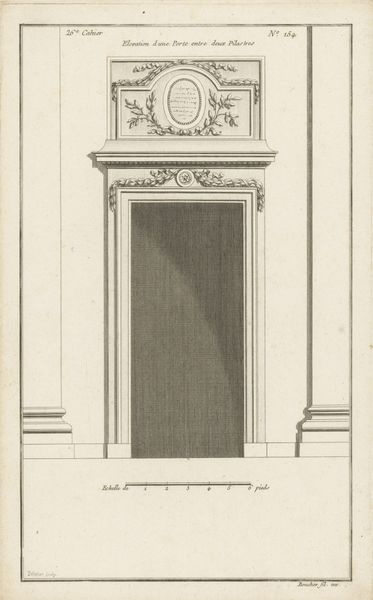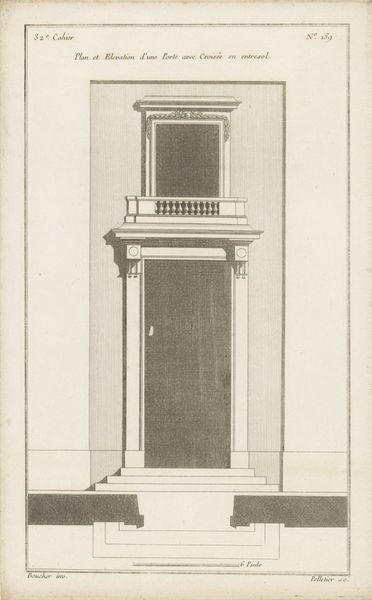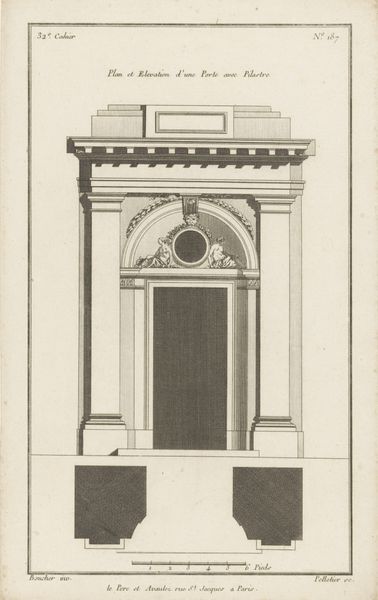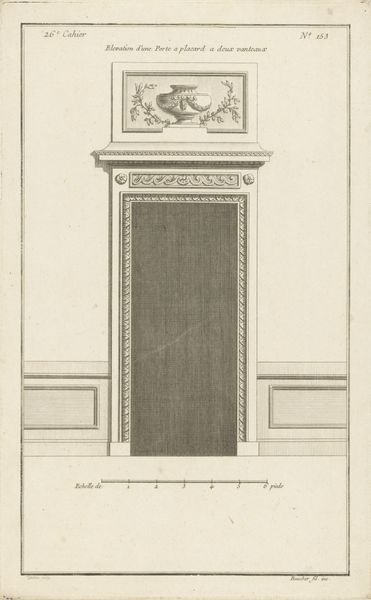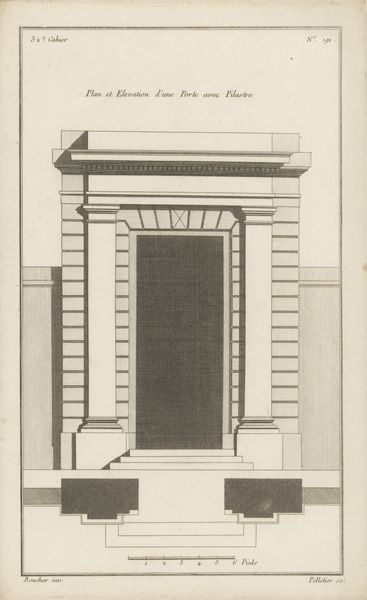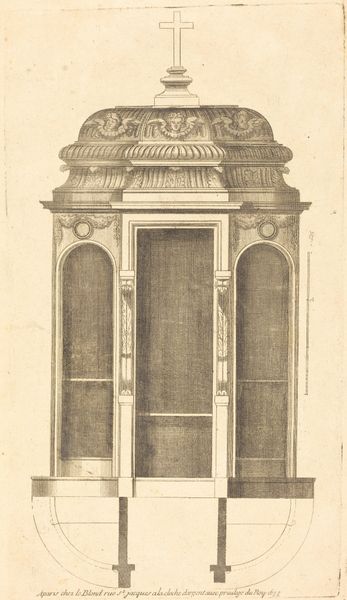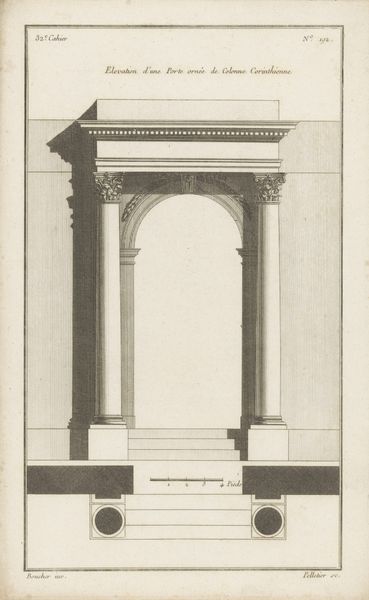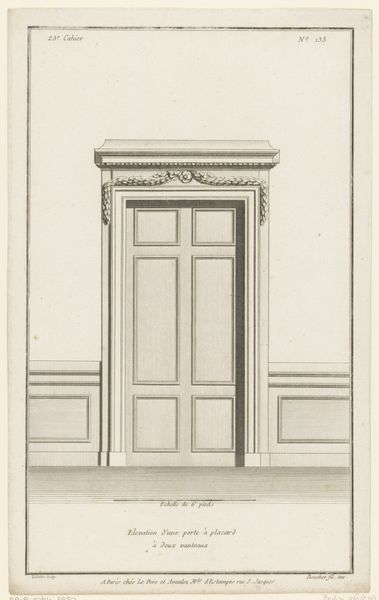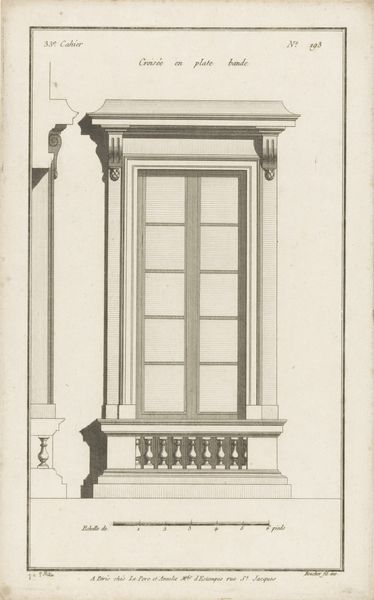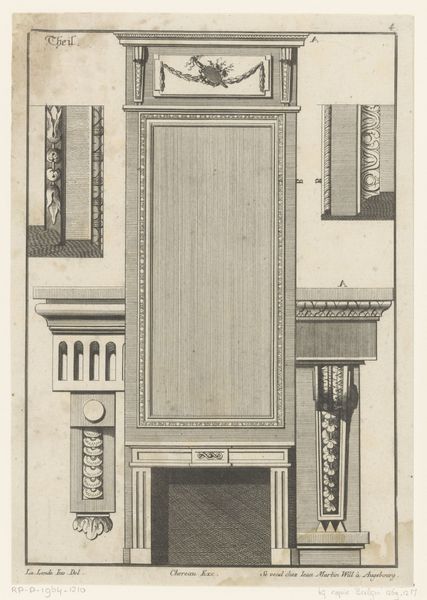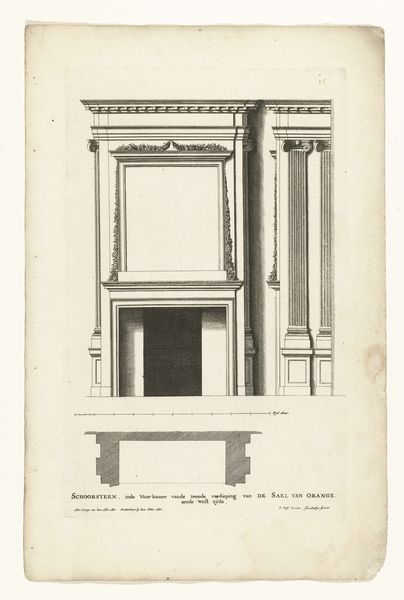
drawing, print, etching, paper, ink, architecture
#
drawing
#
neoclacissism
#
ink paper printed
# print
#
etching
#
paper
#
form
#
ink
#
geometric
#
line
#
cityscape
#
architecture
Dimensions: height 332 mm, width 205 mm
Copyright: Rijks Museum: Open Domain
Editor: So, here we have "Poort met pilasters en trappartij," or "Gate with pilasters and stairs," a drawing by Jean Pelletier from the 1770s. It's an etching and print in ink on paper, very architectural in its precision. What do you see in this piece? Curator: Immediately, I’m drawn to the neoclassical rigidity, the obsession with form and order. Consider the Enlightenment context, the desire to return to the 'purity' of classical architecture. But who decides what "pure" means? And who had access to these spaces that Pelletier is designing? Were they spaces of exclusion or inclusion? Editor: That’s a great point! It does feel…imposing. Like it's meant to keep people either in or out. What would a structure like this communicate to those outside the gate? Curator: Perhaps a sense of power, control, even a subtle threat. Neoclassicism was often embraced by those in power – think of state buildings and monuments. The style became synonymous with authority, subtly reinforcing existing hierarchies. Notice how the steps elevate the door itself. This creates a clear visual statement of superiority and dominance. Editor: It's interesting how a style meant to invoke reason and order could also serve such…unequal power dynamics. The form hides its politics. Curator: Exactly! And the print medium itself speaks volumes about dissemination of power. Etchings like these weren't just art objects, they were models, prototypes that reinforced the dominance of classical ideals. To fully understand its impact, we need to ask: Who was commissioning these works, and what were their social and political goals? Editor: Wow, I hadn't considered the print itself as part of the power structure. I guess it all makes sense now. Curator: Thinking about architecture as a form of social commentary is important. The way spaces are designed directly affects how people navigate and interact with their world. By interrogating Pelletier’s print, we start unpacking the power dynamics embedded within Neoclassicism. Editor: That makes me consider my own reaction and how easily I overlooked it. Thanks for your insight!
Comments
No comments
Be the first to comment and join the conversation on the ultimate creative platform.
